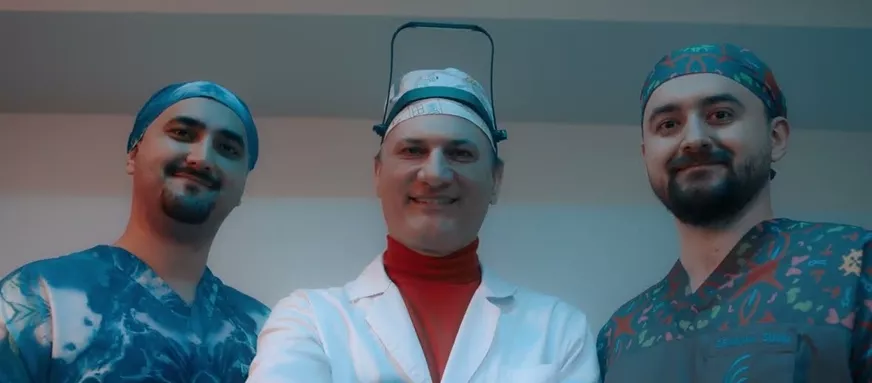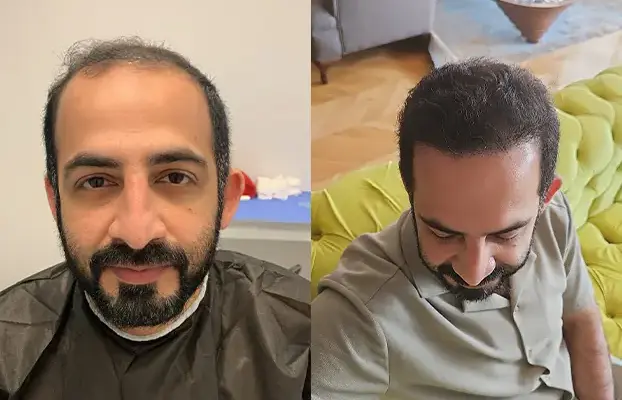What is Hair Transplant Training?
Hair transplant training is a medical course that teaches professionals how to perform safe and effective hair restoration procedures. The program includes both theoretical instruction and practical experience in techniques like FUE, FUT, and DHI. Trainees learn how to assess patients, extract grafts, design hairlines, and implant follicles for natural-looking results.
The hair transplant training courses also cover sterilization, anesthesia, complication management, and post-operative care. Training is ideal for dermatologists, aesthetic doctors, and medical staff aiming to specialize in hair restoration. Programs often include live surgeries or simulation-based learning for real-world experience. Certification is typically awarded upon completion, enhancing career opportunities in cosmetic medicine. Duration ranges from a few days to several weeks.
Hair Transplant Training For Doctors

If you’re an MD, DO, or a licensed surgeon, this section is specifically for you. Your journey is different. You’re not just learning to be a “hand” in the room; you’re learning to be the architect.
For you, the training goes far beyond the technical “how-to.” You’re the one who is ultimately responsible. Your training has to be focused on the “Three A’s”:
- Assessment (The Diagnosis): You’re the one who has to properly diagnose the cause of the hair loss. Is it standard androgenetic alopecia? Is it a scarring alopecia? Are they a good candidate, or are their expectations unrealistic? Your most important job is learning when to say “no.”
- Architecture (The Artistry): This is what separates a doctor from a technician. You’ll learn the deep, artistic principles of hairline design. You’ll learn that a natural hairline is not a straight line. It’s an “irregularly irregular” masterpiece of micro-variations. You’re responsible for the angle, direction, and flow of every single hair.
- Accountability (The Medicine): You’re the one managing the anesthesia, ensuring sterile protocol, and handling any complications. You’re the one managing the patient’s entire 12-month journey, not just the 8-hour surgery day.
For doctors, the training is less about “implanting” and more about “designing,
What Qualifications Do You Need To Do Hair Transplants?
This is the single most important (and most legally gray) area of the entire industry. The rules are a patchwork that varies dramatically from country to country, and from state to state.
Here’s the general, ethically-sound breakdown of who does what:
- The Surgeon (MD, DO, or equivalent): This is the “captain of the ship.” They must be a licensed physician. Legally and ethically, this is the only person who should be performing the “surgical” acts: designing the hairline, making all incisions (channel creation), and taking ultimate medical responsibility.
- The Nurse (RN, NP, PA): Licensed medical professionals like Nurse Practitioners or Physician Assistants, working under the direct supervision of the surgeon, are often trained to perform key parts of the procedure, such as FUE extraction and graft implantation.
- The Technician: This is the backbone of the industry. Technicians are non-licensed specialists. They are not doctors. They are trained specifically in the micro-tasks: graft preparation (dissecting under a microscope), counting, and often assisting with implantation or extraction. They must work under a doctor’s license and cannot legally perform the surgery on their own.
So, when you see a “training course,” you have to ask: who is this for? Is it training a doctor to be a surgeon, or a technician to be an assistant? They are two very different things.
Benefits of Taking a Hair Transplant Training Course
Why even bother? The barrier to entry is high, the work is tedious, and the stakes are higher.
- The Obvious: It’s Lucrative. Let’s not dance around it. This is a high-demand, high-profit cash-pay procedure. There is no insurance to deal with. The financial rewards for skilled practitioners are in the absolute top-tier of aesthetic medicine.
- The Skill: It’s a “Moat.” This is not a skill you can automate with a new laser. It can’t be outsourced to a machine. It requires a human hand, a human eye, and human judgment. It is a true, defensible craft that gives you incredible job security.
- The Satisfaction: It’s Life-Changing. This is the one people underestimate. You’re not just moving hair. You are restoring a person’s confidence, their self-image, their identity. You are handing them back a version of themselves they thought was gone forever. It’s one of the most satisfying “before and after” procedures in all of medicine
What Topics Are Covered in Hair Transplant Training?
A legitimate, high-quality training program won’t just throw you into a surgery. It builds you up from the foundation. It’s a process.
Hair Loss Diagnosis
It all starts here. You’ll learn the Norwood-Hamilton scale for male-pattern baldness and the Ludwig scale for female. You’ll learn to differentiate androgenetic alopecia from things like alopecia areata or scarring alopecias. This is where you learn who not to operate on.
Donor and Recipient Area Management
This is the most critical planning stage. You’ll learn that the donor area is a finite, precious resource. A bad surgeon wastes it in one procedure, leaving nothing for the future. A great surgeon practices “donor management,” harvesting in a way that is sustainable for the patient’s entire life.
Local Anesthesia Techniques
This is an art in itself. This isn’t a 10-minute procedure. It’s 6-10 hours. You’ll learn how to perform a “ring block” and deliver anesthesia in a way that is profound, long-lasting, and (most importantly) comfortable for the patient.
FUE, FUT, and DHI Methods
- FUT (Follicular Unit Transplantation): The “strip” method. You’ll learn how to surgically excise a strip of scalp, and how to suture the wound for a pencil-thin, minimal scar.
- FUE (Follicular Unit Extraction): The modern gold standard. You’ll learn how to use a micro-punch (manual or motorized) to “feel” for the graft and extract it without damaging it (transection). This is all about touch and muscle memory.
- DHI (Direct Hair Implantation): This is an implantation method, not a harvesting one. You’ll learn to use the “Choi Implanter Pen,” a device that makes the site and implants the graft in one single motion. It’s a different, more meticulous, and slower (but highly precise) skillset.
Sterilization and Hygiene Standards
This is non-negotiable. This is a real, invasive surgery. You’ll cover aseptic technique, cross-contamination, and how to set up a sterile field in an outpatient clinic setting.
Certification and Licensing After Hair Transplant Training
Hair Transplant Training Costs 2026
Hair transplant training costs in 2026 will vary depending on course length and content.
Prices vary depending on factors such as location, instructor experience, materials included, and hands-on opportunities. Short 2-3 day workshops focus on basic techniques such as FUE and graft management, while longer programs may include DHI, live surgery, and patient management. Some courses offer accommodation, certification, and post-training support, which can affect the overall cost.
Investing in a reputable course leads to better job prospects and professional credibility. Always verify the course content, instructor credentials, and certification before enrolling.
Frequently Asked Questions
Can non-doctors take hair transplant training?
Yes, absolutely. This is the biggest misconception. Non-doctors can and should take training to become Hair Transplant Technicians. They are the engine room of the clinic. The course will not train you to be a surgeon, but it will train you to be an indispensable, highly-skilled assistant who performs the technical, non-surgical parts of the procedure under a doctor’s license.
Is live patient practice included in training courses?
In the good ones? Yes. In the cheap ones? No. You cannot learn this skill on a mannequin or a piece of fruit. A reputable training program for doctors will, at a minimum, include extensive live surgery observation, and the best ones will include a hands-on, supervised portion where you are performing on a real patient under the direct, one-on-one guidance of the instructor.
How long does it take to become a hair transplant specialist?
Longer than you think. The training course is just the beginning. That’s where you learn the rules. You’re not a “specialist” after a weekend. Most surgeons will tell you the real learning happens in your first 100 cases. To become a true, intuitive, “master” artist? You’re talking about 3-5 years of consistent, dedicated practice. This is a craft, and it demands respect.

